Which plant is called kale. Water rose
Winter. Blue predawn twilight, imperceptibly turning into long dark evenings. Black branches of trees sway in the icy wind - and endlessly far from summer, flowers and green foliage. How amazing on one of these evenings, coming home, suddenly feel the strong scent of jasmine from the doorway! The gaze involuntarily searches the room for a ghostly piece of summer ... Here it is, our little oasis of warmth and greenery - an aquarium! Light shadows play on multi-colored pebbles, bright fish flicker in the underwater thickets. And on the water, spread out corrugated velvet leaves, there are rosettes amazing plants... It is they who exude the summer scent. Blooms Pistia stratiotes- "water salad", " water cabbage"," Water rose ", or" velvet rose ", and scientifically - body pistia - a plant from the aroid family ( Araceae), a relative of anthurium, monstera, house calla lily, wild marsh calla and duckweed.
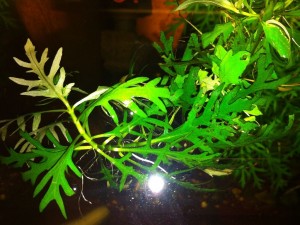
The leaves of the plant are completely covered with hard hairs that repel water and trap air bubbles, so the rosette does not sink and floats, even submerged in water. The buoyancy of the plant is also facilitated by the airborne tissue, which develops in the thickness of the leaf. Flowers (or rather, inflorescences) of a typical family shape - very similar to calla flowers, only small - no more than 1.5–2 cm in size. They open in the center of the rosettes, among young leaves. Each "flower" consists of two parts - the "coverlet" covers separately the female flower of the cob - in the lower part of the inflorescence, and separately - male flowers, reduced to a bunch of accrete stamens, in the upper part.
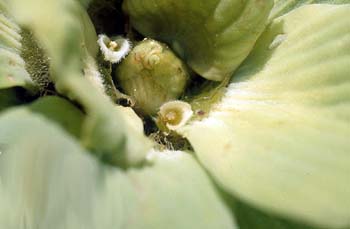

This arrangement of heterosexual flowers within one inflorescence is quite common - remember at least cattail ( Typha latifolia). If cross-pollination is impossible, self-pollination occurs - pollen from male flowers simply crumbles down onto the pistils of female flowers. The same thing, if you believe the literature, happens with the pistia. Many publications, including Plant Life, state that the plant "readily self-pollinates and forms fruit." But in our aquarium, for more than a dozen years, the "cabbage" bloomed regularly, but neither independently, nor with our obsessive attempts to "help" it, did not form fruit.
Pistia blooms as soon as the rosette has reached sufficient size - at least 10 cm in diameter. But the "water rose" is photophilous, and with a lack of light, its rosettes become small, and the leaves lie horizontally on the surface of the water - in order to capture more light. Such plants may not bloom for years. If there is very little light, after suffering a couple of months, the pistia completely goes into organic fertilizer for species less demanding on light ...
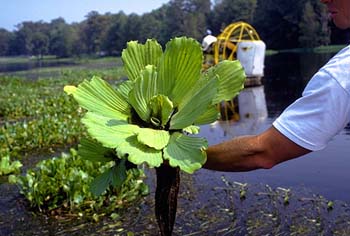
"Giant" pistia from a tropical reservoir
But if the “rose” is properly illuminated (and heated up - the pistia also loves warmth!) With an incandescent lamp (100 W at a distance of 30 cm from the top point of the plant), the leaves will quickly begin to grow, the sockets will fill the entire surface of the water - no longer small and flat, but really similar to huge green roses. If the plant is doing well, even in a room aquarium, the rosette diameter can reach 30–40 cm. If the pistia is grown in a regular round aquarium of 20 liters - which is very decorative! - only one copy remains on the water, the others simply do not have enough space. Now only the outer leaves lie on the surface, and the central ones have beautifully risen above the water to a height of about 10 cm - this is the first sign that the plant is about to bloom.
If there is a pistia in a school aquarium, it can serve as a good demonstration object in botany lessons. The shape of this plant is a typical rosette (the shortened stem is practically invisible among the densely spaced bases of the leaves). The leaf arrangement is spiral, which is clearly visible from above. Leaves of a rather rare form for plants - the widest part is the top of the leaf, which is, as it were, chopped off from above. it good example for the topic: "Variety of forms of the leaf blade." The venation is parallel (which is typical for most monocotyledonous plants), the veins - depressed from above and protruding from the bottom of the leaf blade - are clearly visible. On the leaves of pistia at high humidity (for example, if it grows under the glass of an aquarium), you can observe the phenomenon of guttation - the release of excess water in the form of drops. The whole plant is densely covered with hairs, which can be viewed under a microscope or a strong magnifying glass to ensure that they are multicellular. In the clean clear water the root system of the pistia is clearly visible. For a plant close to the front wall of the aquarium, you can measure the rate of root growth by making marks on the glass with a marker.
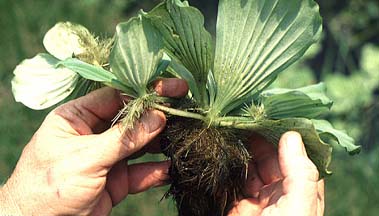
Pistia is a great example vegetative propagation using child sockets. Its thick pubescent stolons grow quickly, and it is possible to study the dependence of their growth rate on the temperature of the water in the aquarium (if there is an aquarium heater and the temperature can be adjusted). It will be interesting to compare the growth rate of two identical daughter outlets, one of which is separated from mother plant, and the other continues to be associated with a stolon. Obviously, the more nutritious the aquarium environment, the less noticeable this difference will be.
In summer, the pistia can be planted in a street pond - to do this, you just need to throw a few outlets into the water as soon as its temperature rises to 10-15 ° C - from about the end of May until the first week of September, "cabbage" can remain outside. Velvet rosettes very much decorate the pond, giving it a "tropical flavor".
It is interesting that the leaves of "cabbage" are often used by bees (including domestic ones) as "rafts" for drinking. Unlike, for example, naked slippery water lilies, it is easier to hold on to the pubescent leaves of "cabbage", and besides, bees drink water not from the edge of the leaf, but from the center of the rosette, between the bases of the leaves - it is convenient and safe!
In the tropics, "cabbage", instantly expanding, promotes waterlogging of water bodies, forming real rafts 1. In some places, this plant is a noxious weed in rice paddies. Recently, largely due to cultivation, the pistia has moved far to the north - there is information about its successful wintering in the reservoirs of Denmark. On the territory of Russia, this plant is found in the Volga delta. The successful wintering of the pistia in the cooling ponds of the thermal power plant is not excluded, but we have no reliable information about this.
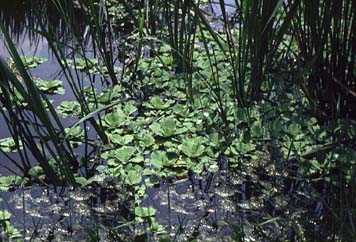
However, when grown in open freezing water bodies, the pistia has no chance of surviving the winter. So ecological catastrophy the reservoir near Moscow, into which this plant will fall, is not threatened. In this, the pistia is very similar to another tropical species, which is also a malicious weed in the tropics and has been actively cultivated recently in the middle lane - the water hyacinth eichornia. And just like the eichornia, the pistia serves as an excellent decorative element of water bodies.
Nevertheless, when planting "water cabbage" in a very small reservoir, weeding will have to be done - especially if the summer is hot and there is other aquatic vegetation in the pond that we would like to preserve. The solid carpet of light sockets is practically impenetrable. And he begins to interfere with normal gas exchange.
For those who conduct such an experiment for the first time, several surprises await. Plants will retain an outwardly common (fibrous) root system, but the roots themselves and their lateral processes will become significantly longer, stronger, and more elastic. The rosette will reach, on average, larger than in the aquarium (if the water is not very cold), and will take on an even more "cabbage" look. The color of the plant will change to a bluish color - the pubescence will become denser: changes are probably taking place at the tissue level.
And the most curious thing is that if the reservoir accidentally dries out, the sockets do not dry out immediately, do not even fade, but continue to grow calmly, if only the soil on which they are found remains sufficiently moist 2.
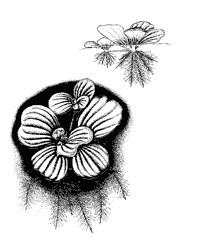
1 In tropical regions, pistia is almost ubiquitous. It was described from the south of North America in the middle of the 18th century, but there is a hypothesis that it was brought there earlier from Africa. - Approx. ed.
2 We grew pistia in a pond with a clay bottom. - Approx. ed.
Sponsor of the article publication: Institute of Distance Education and Part-Time Education - “Humanitarian-Economic and Information-Technological Institute”. Taking advantage of the GEITI offer, you can get a second higher education in economics in Moscow, while being in any part of Russia. Upon completion of training, you will receive a state diploma. You can choose from such economic areas as accounting, analysis and audit, finance and credit, taxes and taxation. In order to start distance learning, it is enough to fill out a questionnaire on the website www.GEITI.ru and the managers of the institute will contact you.
Pterygoid fern or, as it is also called, Ceratopteris (Ceratopteris pteridoides) or Water cabbage – family Horn-like (Ceratopteridaceae).
Growing area
Pterygoid fern grows throughout the South American continent, as well as in Central America. Under natural conditions, it can be found in reservoirs with slowly flowing or stagnant water.
Appearance
Height Pterygoid fern in nature it is about 30 cm, at home it will be limited in size. The broad, light green leaves are finger-shaped. The second name is "water cabbage" Pterygoid fern received due to the fact that its leaves form a dense rosette, reminiscent of a head of cabbage. The leaf plate of the fern is quite large, it, like the cuttings, is very fragile and fragile. has a fibrous root system- its roots intertwine, forming a thick "beard" in which fry take refuge and spawn.
In an aquarium, this fern can root in the ground, or float freely on the surface of the water. The first option looks spectacularly planted along the back and side walls of the aquarium, and the second - in the form of a beautiful rosette of translucent leaves on the water surface.
Pterygoid fern is a wonderful natural filter, absorbing carbon dioxide and organics and actively releasing oxygen. In addition, when floating on the surface, it perfectly diffuses light, creating a comfortable environment for the inhabitants of the aquarium.
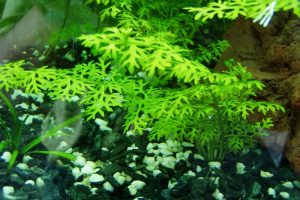
Conditions of detention
Contain Pterygoid fern quite difficult, so few decide to settle it in their underwater garden. The aquarium where this fern grows cannot be closed, because the condensation formed on the leaves harms the plant. Also, he should not be disturbed often, so he must be sedentary. Recommended temperature - 22-28 ° С, water - neutral, with hardness up to 15 * and big amount organic matter... This type of fern needs a lot of light, so the aquarium needs to be provided with intense lighting. If you do not withstand the conditions listed above for the plant, it begins to lose color and slowly dies.
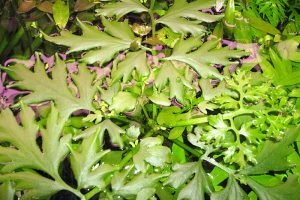

This plant is commonly called kale. However, taste has nothing to do with it. Ceratopteris cannot be eaten, but it is possible to keep it in an aquarium.
In nature, this marsh plant is found in a large area of the tropical South America(Colombia, Paraguay, Peru, Brazil, northern Argentina) and in parts of Central America (for example, Guatemala and Honduras).
Separate small populations are found in the southern states of India, as well as in the countries of the Indochina Peninsula (Vietnam, for example).
This fern species prefers to grow in slowly flowing rivers or in stagnant water of organic-rich swamps.
Taxonomy
According to the scientific classification, ceratopteris (Ceratopteris pteridoides in Latin) belongs to the extensive family of Ceratopteridaceae. In some sources - Ceratopteris cornuta. Botanists have studied the species Ceratopteris pteridoides for a long time and very well.
Appearance and features
 Pterygoid fern is a rather large tropical plant that loves warmth and can exist in turbid, organic-rich water. It is capable of firmly rooting in wet soil, but it can also be on the surface without rooting.
Pterygoid fern is a rather large tropical plant that loves warmth and can exist in turbid, organic-rich water. It is capable of firmly rooting in wet soil, but it can also be on the surface without rooting.
The roots are thin, highly branched, gray... If the vegetation floats freely in the water, more precisely on its surface, then the hanging root is very reminiscent of a tangled beard.
Instances of this type of aquatic flora in natural conditions are quite impressive in size:
- the length of the thick stem is from 23 to 30 cm,
- the length of leaf petioles can reach 18 cm,
- and the thickness is up to 2 mm.
Both the stem and petioles have a spongy structure. The leaf plate itself is also large: up to 18 cm long and 24 cm wide, dissected in shape.
Light green leaves are fleshy, streaked, fragile, in structure they really resemble cabbage leaves.
The plant has both sterile and fertile (shoot-producing) leaves, and these are found in both soil and floating specimens.
Along the edges of each fertile leaf there are so-called sporangia, which are folded down. These are special buds in the form of small sacs that contain 32 spores. New shoots of the fern grow from them.
It should be noted that this reproduction mechanism "works" only in natural conditions... There were no cases of natural reproduction of ceratopteris in aquariums.
On the surface of the water, the leaves are folded into a compact "rosette", which resembles in its own way appearance a small head of cabbage. Hence the name "water cabbage".
Features of keeping in aquariums
 Aquarium... Since this type of fern has a fairly solid size, an aquarium for its optimal maintenance is also needed not small, with a capacity of 50 liters or more. True, in the case of aquarium maintenance, the growth (and, accordingly, size) of the plant will be limited by the framework of the existing artificial reservoir.
Aquarium... Since this type of fern has a fairly solid size, an aquarium for its optimal maintenance is also needed not small, with a capacity of 50 liters or more. True, in the case of aquarium maintenance, the growth (and, accordingly, size) of the plant will be limited by the framework of the existing artificial reservoir.
Aqua design... with the help of ceratopteris, it wins if it is planted in the ground in the background or at the side walls.
Often, kale simply floats on the surface of the water, being the main element for shading areas, which are very attractive to some species of ornamental fish.
In the thickets of kale, especially in its "beard", fry are very fond of hiding.
Aqua parameters... The water in the aquarium tank should be inactive, which is achieved by appropriate adjustment of the compressor and filter pump. The soil should be slightly silted, rich in nutrient organics that serve as food for the development of the plant.
A tropical aquarium containing Ceratopteris pteridoides should have the following water parameters:
- acid-base balance 6.5–7.5 units (near neutral mark);
- temperature in the range from +22 to +28 degrees Celsius;
- hardness no more than 15 degrees.
Lighting it is not too important a maintenance factor, but a day length of at least 6 hours should be ensured. Experts strongly recommend using in lamps only to avoid burning large leaves fern.
Experts say that when the specified conditions of detention are deviated, the plant gradually degrades and dies.

But in this case, there is a danger that the fern leaves will cover the entire water surface of a small domestic reservoir.
- The aquarium where the ceratopteris is located should be covered with a lid.
Of course, the plant will not jump out, like some types of ornamental fish, but this is necessary in order to prevent the formation of condensation on the surface. large leaves... This can damage the plant.
- It doesn't like frequent transplants either.
If you took the fern out of the soil and left it floating on the surface of the aquarium, then it is not at all a fact that when you re-plant the bush in the aquarium soil, it will normally take root.
In general, experts say that the level of content of Ceratopteris pteridoides is a complex plant.
The wing fern is appropriate in a medium-sized aquarium (50-100 liters). Let it float, and the decorative qualities of your home reservoir will only increase from this.
Pistia or Water Cabbage - famous aquarium plant of the Aroid family. Pistia is well known to aquarists. It is also called "water rose", "water salad". It is a thermophilic tropical plant native to freshwater bodies in Africa.
Pistia leaves are collected in a rosette, sessile, velvety, light green in color. The delicate rosettes of its leaves floating on the surface of the water are unusually beautiful. Below, under the leaves, there are long branched green or almost black roots up to 25-30 cm long. The whole plant floats on the water surface in the coastal zone, and when the water level drops, it easily takes root in the ground.
Pistia is considered a capricious plant. She can't stand cold water, lives only in a warm reservoir. For the full growth of Water Kale, you need a lot of light, and a sufficient nutrient medium is also required. In favorable conditions, the rosette of leaves can reach a height of 15 cm and a diameter of up to 40 cm.
Flowering is not of interest, even if it produces an inconspicuous inflorescence on a short peduncle. The very rosette of leaves can look like a green rose or a lush bush of lettuce with corrugated leaves, for which the plant is valued.
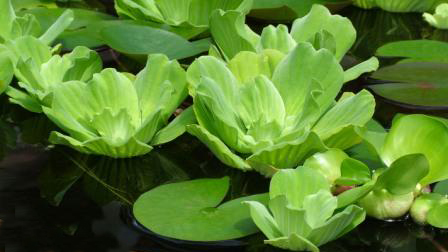
In aquariums, the pistia does not grow large, its rosettes are more often 5-7 cm. Aquarists know that for successful cultivation kale needs a lot of light in winter, otherwise it dries up and disappears.
Surprisingly, transferred to, the pistia grows well, its rosettes become large, many children appear. This is just a gorgeous floating backyard plant!
Of course, tropical water cabbage cannot winter in a pond; in winter it must be stored in an aquarium or jar. If the house has an aquarium and small pistia grow in it, then planting material for garden pond will always be in abundance.
Using pistia in garden ponds
The pistia looks best in small ponds where you can get a good look at its exotic beauty. In bowls filled with water, in small bogs, in combination with tall shoots of Cyperus or Zantedeses, kale will look very impressive. In shallow waters, Pistia can multiply rapidly, forming a floating carpet by the end of summer.
Tips for growing pistia (kale, water lettuce)
Location... As for, for a thermophilic pistia, solar shallow ones are suitable. The water in them should warm up well in the sun. The main requirements for the normal development of kale are warmth and bright light.
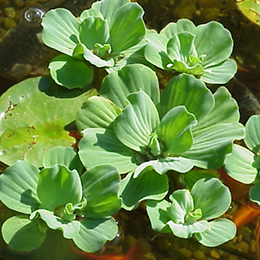
Temperature... Pistias are moved to the pond only when the water warms up to a temperature of 10-15 ° C. The air temperature may be slightly lower. If a cold snap is expected, warm water can be added to the pond.
Nutrition... Kale requires good nutrition. It grows best in water, where there is a lot of nitrates. Full development requires the presence of fertile soil at the bottom of the reservoir, and even better if the roots reach the silt at the bottom of the pond.
Wintering... Kale hibernates in an aquarium at temperatures no lower than 16 ° C. At the beginning of September, only small rosettes are taken from the pond, they are thoroughly washed so as not to introduce pests into the aquarium. It is best to place the plants in a separate aquarium. Pistia needs high air humidity, so the aquarium is covered with glass. Good lighting is required, preferably 10-12 hours of daylight per day.
The beautiful pistia has more whole line names: water rose, velvet rose, water salad and water cabbage. The rosettes of its leaves are very graceful and incredibly attractive. This beauty grows in both hemispheres of our huge planet and in fresh tropical and some subtropical waters. Spectacular pistia is perfect for growing in aquariums and also in warm greenhouses.
Getting to know the plant
Pistia is an excellent representative of the Aroid family. It is endowed with numerous floating feathery roots, which serve as an excellent natural filter, and shortened stems.The spongy leaves of this plant form rosettes floating on the water surface and are endowed with air-filled spaces. All leaves are blunt-wedge-shaped, sessile, slightly narrowed towards the bases and widening at the ends, with rounded front edges. The color of the leaves is usually gray-green, in width they reach 8 - 10 cm, and in length - 15 - 25. The leaves seem to be corrugated, as their almost parallel numerous lateral veins are slightly depressed from above. Meanwhile, these veins protrude in the form of ribs on the lower surfaces of the leaves, incredibly powerful at their bases and less pronounced at their ends. Due to the special structure of the leaves, the pistia is excellently adhered to the water. All leaves are densely covered with grayish short hairs, which act as a kind of water-repellent fabric and protect them from getting wet.
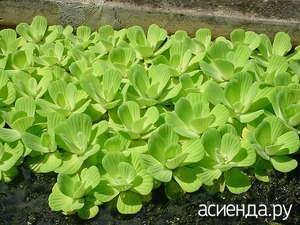
As soon as the diameter of the pistia exceeds ten centimeters, it begins to bloom with small white flowers with a rather pleasant aroma. All flowers are collected in cob inflorescences, located in the very middle of the green carpets of leaves.
Using pistia
In addition to using warm greenhouses in aquariums and reservoirs, pistia is cultivated as feed for pigs in fish ponds. And this plant was introduced into the culture by Chinese pig breeders. Also, the excellent pistia serves as a pretty good fertilizer.In China, young boiled pistia leaves are readily eaten. The Chinese also use this plant to cure skin diseases. In India, pistia is used to treat dysentery, and in Malaysia, gonorrhea. In addition, the pistia is excellent for washing greasy dishes and for removing various stains from fabrics.
It is impossible not to mention that pistia is considered a malicious weed, capable of shortest time completely cover the surfaces of small reservoirs, dooming them to a quick disappearance. In addition, it creates favorable conditions for the life of mosquitoes, thereby contributing to their reproduction.
How to grow
For growing pistia, reservoirs well lit by the sun, the depth of which ranges from ten to forty centimeters, will be most suitable. The ideal conditions are those under which the roots will have direct contact with the ground at the bottom of the reservoirs.
Pistia is very fond of warmth, therefore, for its full development, it will require a lot of heat, bright lighting and good nutrition. Light will suit both natural and artificial. In addition, the pistia will still need to be provided and quite high humidity air.
Plants are released into the water only after the establishment of warm weather. This can be done already at the beginning of summer, when the water temperature in the reservoirs rises above ten degrees.
Pistia is a rather whimsical plant, one might even say that it is capricious. It can withstand winter temperatures only if it is at least sixteen degrees. Around the end of August, the pistia is transferred from open reservoirs to warm rooms. This beauty tolerates winter pretty well in home aquariums.


